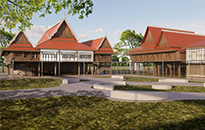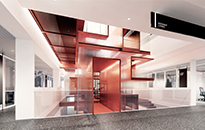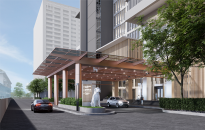|
||||
|
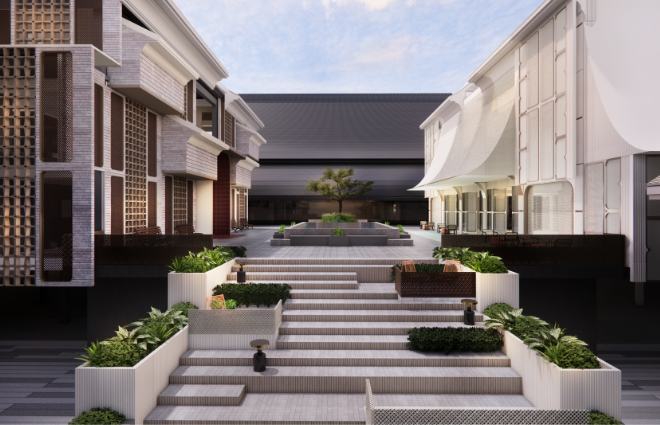
THESIS2567: PIN-INN BANTADTHONG HOTEL & COMMUNITY, BANGKOK THAILAND
2505588 THESIS 2567
PROJECT: PIN-INN BANTADTHONG HOTEL
STUDENT : KANTHICHA SAIUTHAYARN
LOCATION: BANGKOK, THAILAND
AREA: 3,581 sq.m.
The PIN-INN BANTADTHONG HOTEL & COMMUNITY project is a design and renovation initiative aimed at revitalizing a group of commercial buildings in the Bantadthong neighborhood. The goal is to support and foster growth that aligns with the evolving identity of the area, catering to a diverse cultural demographic—particularly tourists and students. This project aims to offer meaningful experiences through a variety of activities and spaces, including hotel accommodations and supporting facilities that emphasize Thai-Chinese cultural expression. The design bridges past and present, making cultural heritage accessible and engaging for the modern generation while reflecting the lifestyle of the local community.
Research into the Bantadthong area reveals a uniquely rich context. Historically, it was a well-known hub for the auto parts trade, commonly referred to as Sieng Kong, largely driven by Chinese entrepreneurs. In recent years, the area has come under the management of the Property Management of Chulalongkorn University (PMCU), which has recognized its potential and helped transform it into a vibrant food street, similar to the popular Yaowarat (Chinatown). This transformation has led to a dynamic cultural fusion of Thai and Chinese influences.
The project site is located within a cluster of shophouses designed with a touch of Sino-Thai architectural style, close to Bantadthong Road. As a result, the new design strategy targets modern travelers—particularly solo travelers and small groups of friends from China and other countries—rather than traditional large tour groups. It also aims to attract local youth living in the area.
The concept embraces "Mixed-Culture" and "Asian Accent", drawing from both Thai and Chinese identities in elements such as color schemes, materials, forms, cultural references, and user experiences across different spaces. The design seeks to allow younger generations to engage with these cultures in a way that feels natural and resonant with their own perspectives.
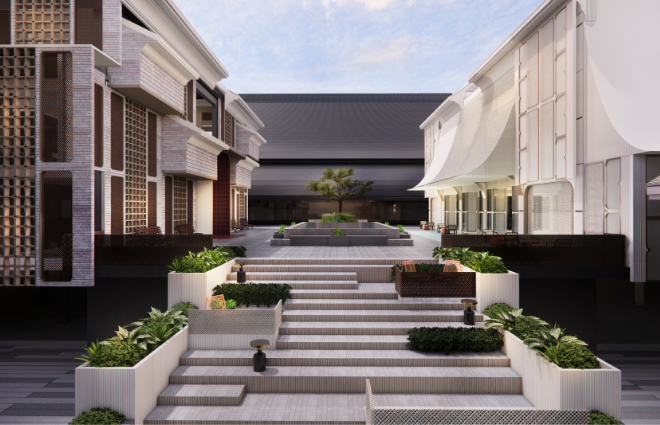
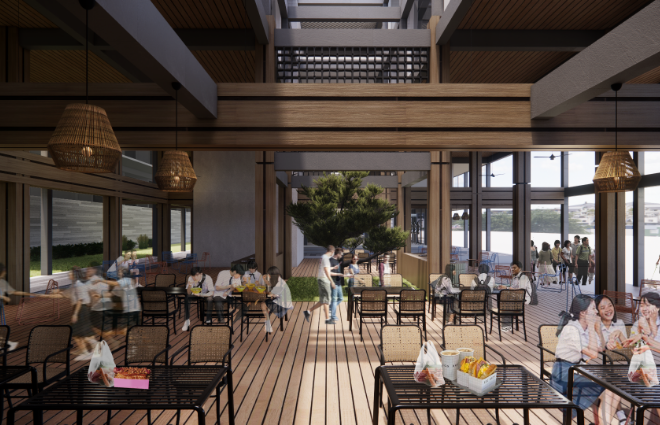

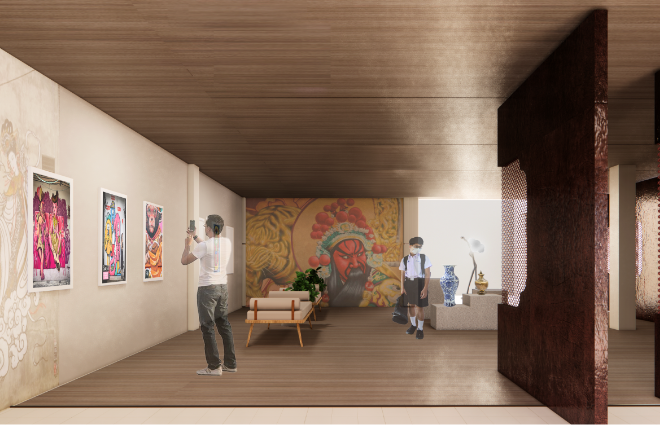
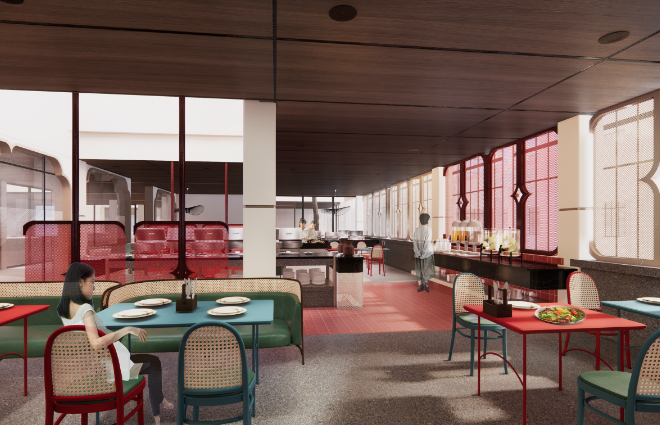
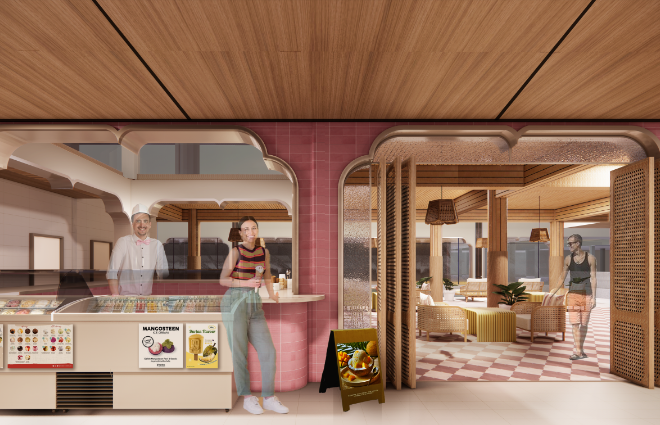
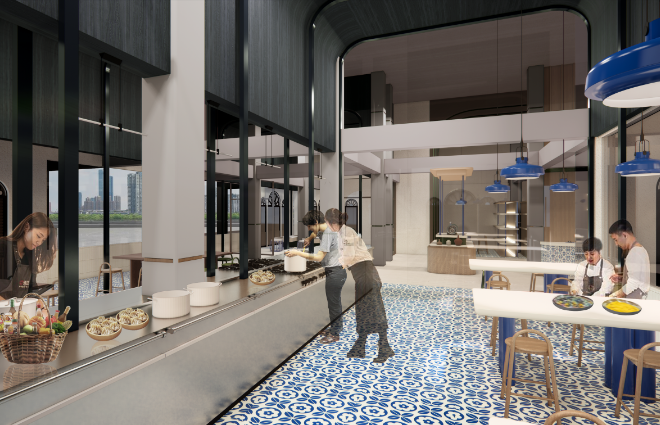

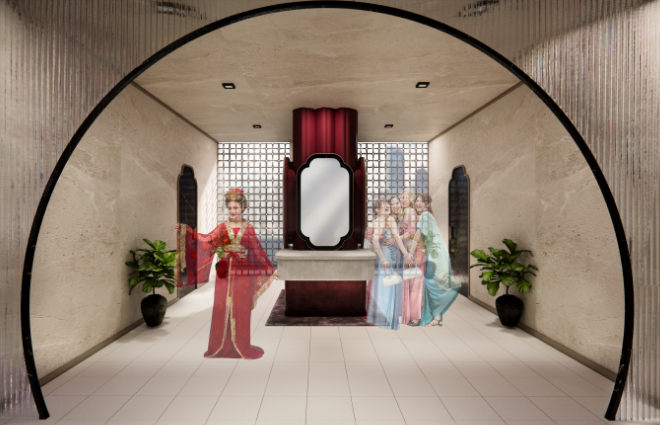
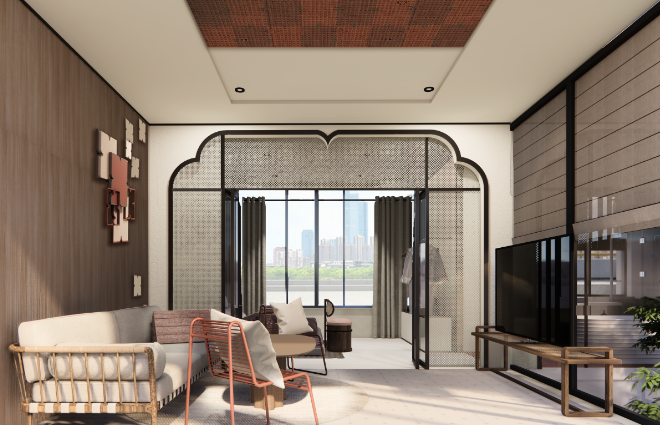
| MORE | ||||||||||||||||||||||||||||||||||
|
